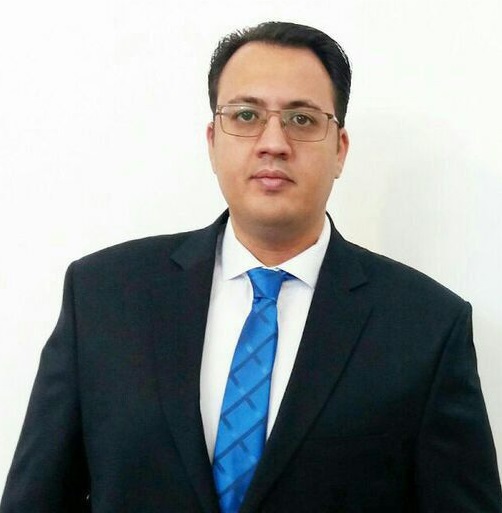PASSAGE 3 Game theory
5 آذر 1403 1403-09-05 18:59PASSAGE 3 Game theory
READING PASSAGE 3
You should spend about 20 minutes on Questions 27-40, which are based on Reading Passage 3 on pages 10 and 11.
Game theory
Computer software that models human behaviour can make forecasts outsmart rivals and transform negotiations
According to game theory, our chances of success in negotiations are based on the choices of others. Computer models have been developed to work out how events will unfold as people and organizations act in what they perceive to be their own best interests. Numerical values are placed on the goals, motivations, and influence of players, and likely options are considered. Game theory software then evaluates the ability of each of those players to influence others, and hence predicts the course of events.
Although many individuals would feel uncomfortable having a computer make decisions for them, many organizations run such computer simulations for law firms, companies, and governments. But feeding software with accurate data on all the players involved is especially tricky for political matters. Reinier van Oosten of Decide, a Dutch firm that models political negotiations, notes that predictions may become unreliable when people unexpectedly give in to ‘non-rational emotions’, such as hatred, rather than pursuing what is apparently in their best interests. However, sorting out people’s motivations is much easier when making money is the main object. Accordingly, modeling behavior using game theory is proving especially useful when applied to economics.
Using game theory software to model auctions can be very lucrative. Consulting firms are entering the market to help clients design profitable auctions, or to win them less expensively. In 2006, in the run-up to an online auction of radio-spectrum licenses by America’s Federal Communications Commission, Dr. Paul Milgrom, a consultant and Stanford University professor in the United States, customized his game theory software to assist a consortium of bidders. He was apprehensive at first, but the result was a triumph. When the auction began, Milgrom’s software tracked competitors’ bids to estimate their budgets for the 1,132 licenses on offer. Crucially, the software estimated the secret values bidders placed on specific licenses, and determined that certain big licenses were being overvalued. Milgrom’s clients were then directed to obtain a collection of smaller, less expensive licenses instead. Two of his clients paid about a third less than their competitors for an equivalent amount of spectrum, saving almost $1.2 billion. Such a saving makes one wonder why everyone isn’t using game theory software. And, if they were, how would that affect the game?
PA Consulting, a British firm, designs models for software based on game theory to help its clients solve specific problems in areas from pharmaceuticals to the production of television shows. British government agencies have asked PA Consulting to build models to test zoning rules that govern how many of a certain type of business should be allowed to operate in one area. To give a simple example; if two competing ice-cream sellers share a long beach, they will set up stalls back-to-back in the middle and stay put, explains Dr. Stephen Black, a modeller for PA. Unfortunately for potential customers at the far ends of the beach, each seller prevents the other from relocating – no other spot would be closer to more people. Introduce a third seller, however, and the stifling equilibrium is broken as relocations and pricing changes energize the market. By studying a chain of events such as this, software designers can assess the effect of change and see the patterns in possible outcomes that may occur. As a result, the use of modeling makes clients more inclined to look at future repercussions when making business decisions, Black says.
Where is all this heading? Alongside the increasingly elaborate modeling software, there are also efforts to develop software that can assist in negotiation and mediation. Two decades ago, Dr. Clara Ponsati, a Spanish academic, came up with a clever idea. She accepted that, as negotiators everywhere know, the first side to disclose the maximum amount that it is willing to pay loses considerable bargaining power. Without leverage, it can be pushed backward in the bargaining process by a clever opponent. But if neither side reveals the concessions it is prepared to make, negotiations can become very slow or collapse. However, difficult negotiations can often be pushed along by neutral mediators, especially if they are entrusted with the secret bottom lines of all parties. Ponsati’s idea was that if a human mediator was not trusted, affordable, or available, a computer could do the job instead. Negotiating parties would update the software with the confidential information on their bargaining positions after each round of talks. Once positions on both sides were no longer mutually exclusive, the software would be used to split the difference and propose an agreement. Ponsati, now head of the Institute of Economic Analysis at the Autonomous University of Barcelona in Spain, says such ‘mediation machines’ could be employed to push negotiations forward by unlocking information that would otherwise be withheld from an opponent.
Could mediation which has been achieved using software based on game theory spread from auction bids and utility pricing to resolving political and military disputes? Today’s game theory software is not yet sufficiently advanced to mediate between warring countries. But one day opponents on the brink of war might be tempted to use it to exchange information without having to engage in conflict. According to some game theorists, opponents could learn how a war would turn out, skip the fighting, and strike a deal. Over-optimistic, perhaps – but game theorists do have rather an impressive track record when it comes to predicting the future.
Questions 27-31
Choose the correct letter A, B, C, or D.
Write the correct letter in boxes 27-31 on your answer sheet.
27. What does the writer suggest about game theory software in the first paragraph?
A. Traditional negotiating practices should be used to supplement the software.
B. Success of the software depends on the accuracy of the assigned.
C. This software anticipates the outcome of future events.
D. Future business negotiations will be dominated by this software.
28. Reinier van Oosten says predicting what people will do works best if
A. Participants are honest about how they feel.
B. There is a good understanding of the client’s culture.
C. People strongly dislike the other party.
D. Profit is the primary motivator.
29. After using game theory software in 2006, Dr. Milgrom instructed his clients to
A. Buy big licenses.
B. Negotiate with the other parties directly.
C. Make one big offer at the end of the auction.
D. Purchase a mix of licenses.
30. The writer refers to Stephen Black’s ice-cream seller example in order to
A. Show the impact new competitors have on business.
B. Highlight the importance of location on business success.
C. Demonstrate that businesses must follow a strategy.
D. Clarify how pricing affects sales.
31. Ponsati believes business negotiations are more likely to progress if
A. A solution is proposed by one of the interested parties.
B. Mediators or computers take over the bargaining process.
C. Both parties follow the rules of negotiating.
D. Sufficient time is allowed for the bargaining process.
Questions 32 – 35
Do the following statements agree with the claims of the writer in Reading Passage 3? In boxes 32-35 on your answer sheet, write
YES if the statement agrees with the claims of the writer
NO if the statement contradicts the claims of the writer
NOT GIVEN if it is impossible to say what the writer thinks about this
32. Game theory software may be unhelpful when dealing with political issues.
33. Dr. Milgrom was confident about applying his software to an auction in 2006.
34. Dr. Ponsati believes ‘mediation machines’ are an inappropriate method of negotiation in areas other than business.
35. Military organizations refuse to accept that software based on game theory could prevent wars.
Questions 36-40
Complete each sentence with the correct ending, A-F, below.
Write the correct letter, A-F, in boxes 36-40 on your answer sheet.
36. According to Reinier van Oosten, game theory software falls when…
37. Dr. Milgrom’s software is successful in detecting if…
38. Dr. Black’s game theory software is a helpful tool when…
39. According to Dr. Ponsati, negotiators fall behind if…
40. Dr. Ponsati’s mediation machine is useful when…
A something is thought to be worth more than it really is.
B discussions between the parties begin to break down.
C too much information is given to the other parties early on.
D businesses consider possible future developments.
E people allow their feelings to influence decisions.
F a solution requires face-to-face negotiation
27. C – This software anticipates the outcome of future events
Explanation: “Game theory software… predicts the course of events.” (Paragraph 1). This indicates that the software’s primary function is to forecast future outcomes.
28. D – Profit is the primary motivator
Explanation: “Sorting out people’s motivations is much easier when making money is the main object.” (Paragraph 2). Van Oosten explains that game theory works best when profit is the main goal, as motivations become clearer.
29. D – Purchase a mix of licenses
Explanation: “Milgrom’s clients were then directed to obtain a collection of smaller, less expensive licenses.” (Paragraph 3). Rather than going for the big licenses, Milgrom advised clients to buy a mix of smaller licenses to save costs.
30. A – Show the impact new competitors have on business
Explanation: “Introduce a third seller… and the stifling equilibrium is broken.” (Paragraph 4). Black’s example demonstrates how adding competitors affects market dynamics and encourages business adjustments.
31. B – Mediators or computers take over the bargaining process
Explanation: “Negotiations… can be pushed along by neutral mediators… if a human mediator was not trusted… a computer could do the job instead.” (Paragraph 5). Ponsati suggests that neutral mediators, including computers, can make negotiations more efficient.
32. YES
Explanation: “Predictions may become unreliable when people unexpectedly give in to ‘non-rational emotions’.” (Paragraph 2). This indicates that game theory may be ineffective in political issues, where emotions can interfere.
33. NO
Explanation: “He was apprehensive at first, but the result was a triumph.” (Paragraph 3). Dr. Milgrom was initially hesitant, not confident, about using his software in the auction.
34. NOT GIVEN
Explanation: There is no information in the passage on whether Dr. Ponsati thinks “mediation machines” are inappropriate outside of business contexts.
35. NOT GIVEN
Explanation: The passage does not mention whether military organizations reject the idea of game theory software as a tool to prevent wars.
36. E – people allow their feelings to influence decisions
Explanation: “Predictions may become unreliable when people unexpectedly give in to ‘non-rational emotions’.” (Paragraph 2). Van Oosten notes that software struggles when decisions are based on emotions rather than logic.
37. A – something is thought to be worth more than it really is
Explanation: “The software estimated that certain big licenses were being overvalued.” (Paragraph 3). Milgrom’s software identifies when licenses are overpriced, allowing clients to make better purchasing decisions.
38. D – businesses consider possible future developments
Explanation: “The use of modeling makes clients more inclined to look at future repercussions.” (Paragraph 4). Dr. Black’s software helps clients anticipate future outcomes, influencing their decisions.
39. C – too much information is given to the other parties early on
Explanation: “The first side to disclose the maximum amount… loses considerable bargaining power.” (Paragraph 5). Ponsati states that revealing too much can reduce a negotiator’s leverage.
40. B – discussions between the parties begin to break down
Explanation: “Negotiations can become very slow or collapse… ‘mediation machines’ could be employed to push negotiations forward.” (Paragraph 5). Ponsati suggests that her mediation machine can help when negotiations stall.







